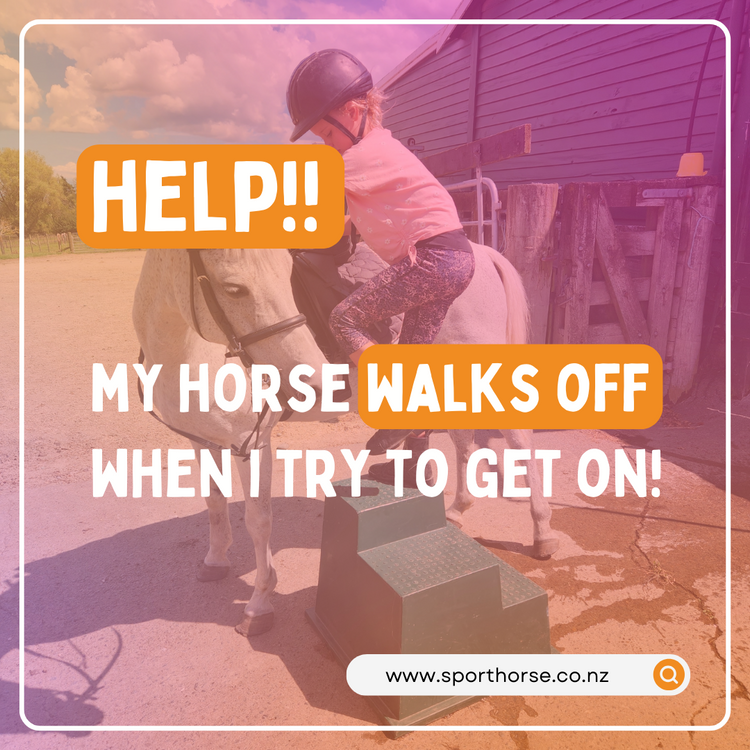
My horse walks off when I try to get on!
I've been riding horses for years, and one of the things I ignored as a kid was the importance of a horse standing still while I was getting on. It is essential for safety, important to remember that whilst you might find it easy to mount from the ground while your horse is moving around, what happens when it comes time to sell said horse and the first impression really counts!
When a horse is trained to stand still, it means that they will remain calm and still while the rider mounts. This may seem like a small thing, but it can make a big difference in terms of safety. If a horse is moving around or fidgeting when the rider is trying to mount, it can be dangerous for both the rider and the horse.
It's important to start with the basics, such as teaching the horse to stand still on the ground while being groomed or tacked up. This can be done by using positive reinforcement, such as treats or praise, to reward the horse for standing still. Over time, the horse will learn that positive behaviour is rewarded.
Teaching a horse to stand still also helps to build a strong foundation for other training. When a horse is able to stand still and remain calm, they are more receptive to other training exercises, such as lateral movements or jumping. It's much easier to teach a horse new skills when they are calm and relaxed, rather than when they are anxious or agitated.
There are two main methods that you can turn to. The first is to teach the horse that the mounting block is a good place to be, and that not standing still results in added pressure. By using this method, you’re helping the horse make the easy decision – they are rewarded by a release of pressure when they make the decision to stand still while you mount.
Here’s a step-by-step rundown of how that works:
1. Lead the horse to the mounting block and ask him to stand.
2. If your horse moves off, swings around, or makes to difficult for you to mount quietly and calmly, start working them.
3. This could be in the form of groundwork like rein backs and turn on the haunches, a little lunge around you if you have a long lead rope, or anything which makes their feet move around and which keeps them doing something.
4. After a couple of minutes, reapproach the mounting block and let your horse stand still – reward them with a little treat or a scratch as long as they’re standing nicely.
5. Try to mount again. Remember that while you need to hold the reins, you don’t want to pull back and insist they don’t move – instead, let them decide whether or not to move off.
6. If your horse does move, repeat steps 1-5.
7. If he stands, mount and reward your horse with plenty of praise and a scratch or pat. Let him stand still for a few moments before you ask him to move off.
The second method, which is also quite popular and successful, involves desensitising your horse to the idea of you mounting. This works well for horses who are highly strung, anxious, or who might have had a bad experience with mounting before.
Patience is key here, and making sure each step is properly solidified before moving onto the next will lay a good foundation for the future:
1. Firstly, make sure your horse has enough ground work in place to move forwards, backwards, to stand still, and (ideally) to move their quarters over with the tap of a whip or a push of the hand.
2. Start by “parking” your horse alongside the mounting block and asking them to stand. Give them a rub or a treat while they stand there. If they move at all, move them back into place and then praise them. You’ll want to do this a few times in a row, ideally.
3. Next you can move to standing on the mounting block while your horse stands. Keep praising them when they are relaxed and standing still. Step on and off a few times to test this, praising them whenever they stand still. If they do move, correct them and then step up again.
4. Once your horse is standing nicely with you on the mounting block, you can start the actual mounting process. Swing into the saddle gently and without pulling your horse off balance. A treat from the saddle is often useful once you’re on board. Again, you can repeat this more than once.
5. Ask your horse to stand until you want to move off.